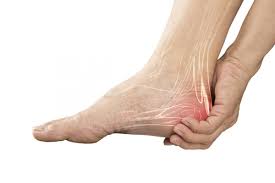Introduction
Nerve pain and nerve damage in the foot can be debilitating and affect an individual’s overall quality of life. Whether caused by injuries, medical conditions, or other factors, understanding these conditions is essential for proper diagnosis and treatment. In this article, we’ll explore the differences between nerve pain and nerve damage in the foot, their common causes, and available treatments.
Nerve Pain in the Foot
- Description:
- Nerve pain, often referred to as neuropathic pain, is characterized by a sharp, burning, tingling, or shooting sensation in the foot. It can be intermittent or chronic, and it is usually a symptom of an underlying condition.
- Causes:
- Nerve pain in foot can result from various factors, including diabetes, nerve entrapment, inflammation, infections, or injuries. Common conditions associated with nerve pain include diabetic neuropathy, Morton’s neuroma, and plantar fasciitis.
- Treatment:
- Treatment options for nerve pain in the foot may include medications like neuropathic pain relievers, physical therapy, nerve blocks, or in severe cases, surgical interventions to release entrapped nerves or address underlying issues.
Nerve Damage in the Foot
- Description:
- Nerve damage in the foot refers to the impairment or loss of function in the nerves of the foot. It can manifest as a loss of sensation, muscle weakness, or difficulty in controlling foot movements. Nerve damage can be temporary or permanent.
- Causes:
- Nerve damage in foot can result from various sources, including traumatic injuries, prolonged pressure or compression (as in the case of diabetic neuropathy), and underlying medical conditions like multiple sclerosis or Guillain-Barré syndrome.
- Treatment:
- Treatment for nerve damage in the foot often depends on the underlying cause and the extent of damage. Management may include physical therapy, medications to manage symptoms, lifestyle changes, or surgical interventions in severe cases.
Key Differences
- Nature of the Condition:
- Nerve pain is typically a symptom of an underlying condition and is characterized by discomfort or pain. Nerve damage, on the other hand, refers to the impairment of nerve function and can result in a loss of sensation, muscle control, or reflexes.
- Causes:
- While both conditions can result from injuries, nerve pain often stems from conditions like diabetes, inflammation, or entrapment, while nerve damage can also result from neurological disorders and more severe trauma.
- Treatment Approach:
- Nerve pain is often managed with pain-relieving medications, while addressing nerve damage may require a broader approach, including therapies and interventions to manage the underlying condition.
- Prognosis:
- Nerve pain can be managed, and with the right treatment, individuals often experience relief. In the case of nerve damage, the prognosis varies depending on the severity of the damage and the cause, with some damage being irreversible.
Conclusion
Nerve pain and nerve damage in the foot can significantly impact an individual’s mobility and overall well-being. Identifying the cause and understanding the nature of the condition is crucial for effective treatment and management. If you or someone you know is experiencing foot-related nerve issues, seeking medical attention and diagnosis is the first step towards finding the appropriate treatment plan and improving the quality of life.










